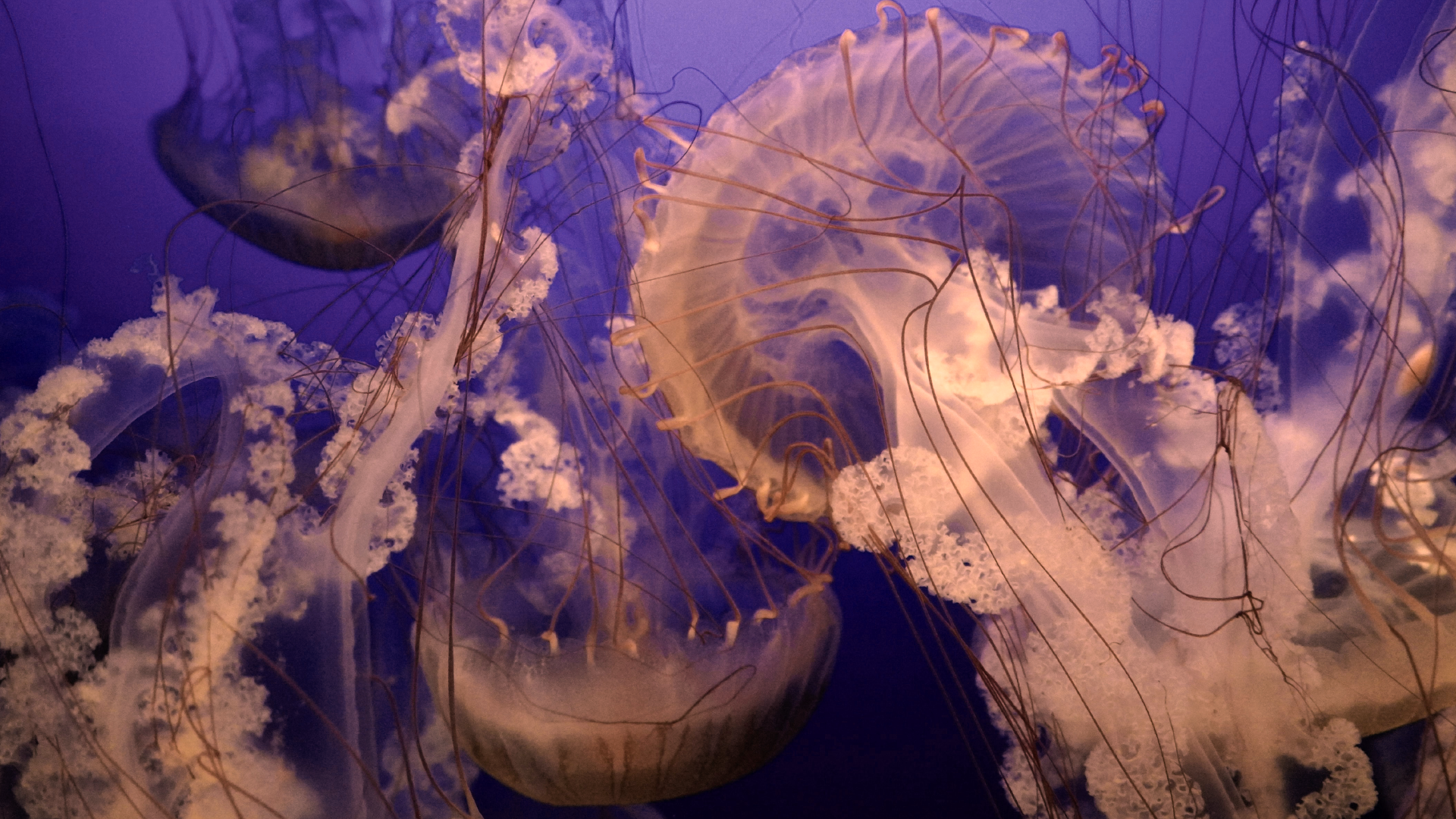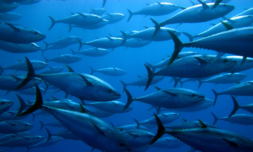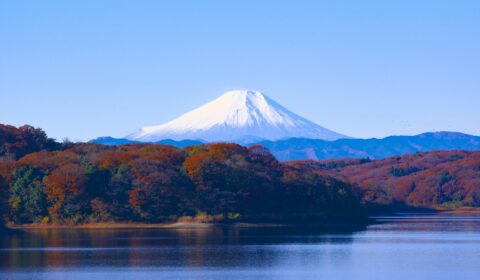لفهم مدى مرونة قناديل البحر في مواجهة المحن البيئية ، علينا أن ننظر إلى بيولوجيتها. وعندما يتلخص الأمر في ذلك ، فإن قنديل البحر مخلوقات بسيطة إلى حد ما.
على عكس الحيوانات المعقدة التي تتغذى عليها - أسماك القرش وسمك الشمس والسلاحف والطيور البحرية - تفتقر قنديل البحر إلى العقول والمعدة والأمعاء والرئتين. بدلا من ذلك ، هم مكونون من 95٪ ماء وتمتص العناصر الغذائية والأكسجين من خلال الطبقات الجيلاتينية لبشرتها.
بدون هذه الأجزاء المعقدة من الجسم ، يمكن لقنديل البحر التكيف بسهولة. ستؤدي درجات الحرارة المتقلبة وحموضة المحيطات وزيادة الملوحة إلى الضغط على الحيوانات الأكثر تعقيدًا ، لكن قنديل البحر الأساسي يظل غير متأثر.
الجيلي ليست أكلة انتقائية أيضًا ، مما يمنحها ميزة كبيرة من حيث العثور على الفريسة. تجمع مخالبها اللاذعة والمتحركة فعليًا أي شيء متاح ، مثل العوالق أو القشريات أو بيض السمك. المحيط عبارة عن بوفيه مفتوح لكل ما يمكنك تناوله عندما تكون قنديل البحر.
التكاثر سهل للغاية ، مع تربية الإناث بيض 45,000 إلى يوم. لا يحتاجون إلى كهوف مريحة أو آمنة لتخزينهم حتى الفقس ، حيث يستقر البيض على أي سطح صلب يمكنهم العثور عليه.
أصبحت الأحواض الخرسانية ومنصات الوقود الأحفوري موائل ملائمة لتعلق سلائل قنديل البحر بها ، مما يسمح بزيادة معدل نجاح الفقس. وهي متوفرة بكثرة في المناطق المزدحمة بالنشاط البشري إلى درجة أن محطات الطاقة ومنشآت تحلية المياه وشبكات الصيد موجودة بشكل منتظم معهم.
تحدث عن الكرمة ، إيه؟
يشجع النشاط البشري نمو وتواتر أسراب قناديل البحر بطرق أخرى.
عندما يتم إفراغ مياه الجريان السطحي المحملة بالمواد الكيميائية من المصانع أو المزارع في المحيط ، يؤدي ذلك عادةً إلى "مناطق ميتة" حيث يمكن لعدد قليل جدًا من الكائنات الحية البقاء على قيد الحياة. الحياة النباتية ، مثل الطحالب ، هي معروف بالنمو إلى مستويات خطيرة في المناطق منخفضة الأكسجين أو شديدة الملوحة ، لكن قناديل البحر تشترك في هذه القدرة أيضًا.
ذكرت سميثسونيان أن عدد المناطق الساحلية الميتة قد اقترب بلغ 500 بعد مضاعفة كل عقد منذ الستينيات. المناطق الميتة هي عقارات رئيسية للهلام ، الذي أصبح من الحيوانات المفترسة الأولى بفضل قلة المنافسين في السلسلة الغذائية.
كما أن ارتفاع درجة حرارة المياه يسهّل نموها السكاني ، حيث تم رصد أسراب ضخمة في البحر الأبيض المتوسط هذا الصيف بالقرب من إسرائيل وتركيا واليونان ومالطا. بعض الأنواع لديها تم رصده تطفو حول السواحل الباردة في أوروبا والمملكة المتحدة واسكتلندا وويلز.
يشير ازدهار قنديل البحر الأكثر تكرارًا إلى أن الحياة في المحيط أصبحت أسهل بالنسبة للأنواع الغازية ، والتي يقول الخبراء إنها نتيجة ممارسات الصيد الجائر التي تستنزف مفترساتها الطبيعية.
لا تشكل مخالبها السامة خطرًا على مرتادي الشواطئ فحسب ، بل يشير وجودها المتزايد إلى أن توازن النظام البيئي البحري أصبح غير متوازن بشكل كبير. يشعر علماء الأحياء البحرية بالقلق من أن المزيد من قناديل البحر هي علامة على أن التنوع البيولوجي في المحيط آخذ في الاختفاء واستبداله بهلام لاذع بلا عقل ، بلا عقل.
على الرغم من أنهم يمكن كن جميلًا ، يجب أن يؤخذ وجودها المشؤوم كعلامة تحذير على أننا بحاجة إلى تحسين صحة محيطنا. يمكن القيام بذلك عن طريق وقف الصيد الجائر، منع تسارع تسخين المحيطات بواسطة التخلي عن الوقود الأحفوريو amping up جهود الحفظ قبل فوات الأوان.




















